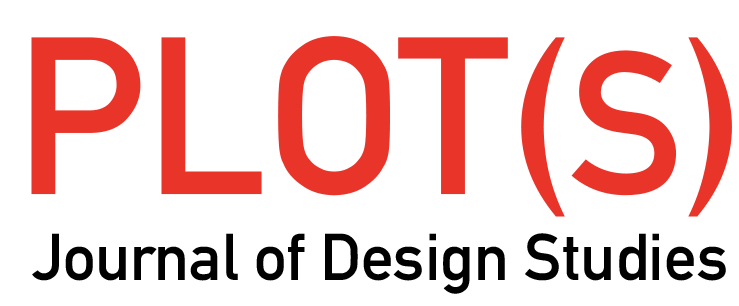Implementing Co-Design to Include Youth in Civic Projects
Maanasa Sivashankar & Callan Hajosy
Material infrastructures are critical to the experience and quality of everyday life. They are vital for social connections, public well-being, and the development of future expectations within a community. However, many of our public infrastructures, including transportation networks, are not designed equitably. What do infrastructures promise? Who are they intended to serve? Who participates in their cycles of development and redevelopment? Such questions are necessary to understand exactly who benefits from these systems and who gets left out. By intentionally focusing on the communities served by such frameworks, these inquiries become requisites for more equitable design systems that benefit everyone, including economically marginalized communities of color. The inclusive nature of participatory planning emphasizes the need to engage the people impacted by planning decisions.1 However, the degree of participation is not prescribed, and the process is often restricted to user-surveys. To achieve its commitment and include residents’ voices, it is necessary to consider who is engaged, how they are engaged (i.e., the tools and methods employed), and their authority of influence. and their authority of influence.
Employing a collaborative design (co-design) approach to the redesign of public infrastructures helps achieve this goal by ensuring residents who are reliant on existing systems are placed at the center of the design process. Collective work develops empathy for the stakeholders to produce solutions and propose design changes. Beyond the apparent benefits to users, co-design is seen to improve idea generation, service delivery, project management, and long-term outcomes for civic projects.2
The following ideas are extracted from our thesis research (conducted between September 2019 and May 2020) which examines an ongoing civic initiative in New York City to identify how this form of participation is (or is not) being conducted, who gets left out, and how these initiatives can work more effectively for the people who are being overlooked. Our work is focused on a specific user group directly impacted by the design decisions made from this civic infrastructure initiative and provides tools and methods to engage with them in a more effective co-design process.
This study examines the Metropolitan Transportation Authority’s (MTA) borough Bus Network Redesign project, in which we identified student riders as a significant demographic whose needs have not been addressed throughout the MTA’s public engagement process. Transportation is a vital public resource; as a connector of people, it supports access to other resources such as healthcare, education, and recreation. The Redesign project—which is working with New York City Transit Authority (NYCTA), the New York City Department of Transportation (NYCDOT), and public transportation users—claims to employ a participatory (or co-design) process to include residents’ voices in the redesign of the city’s outdated and, as often cited, “unreliable” bus network.3
This article critically examines the MTA’s objectives and most current redesign process, emphasizing gaps found in its participatory dynamics. In response, we propose a co-design methodology for student riders (identified as key stakeholders)4 that provides tools to enable participation and increase access, facilitate the iterative design process, and offer ways to generate experiences and test ideas. Our work addresses the importance of engaging young riders and outlines the different design-led research methods employed in our research. We propose a renewed co-design approach to improve the MTA’s participatory planning within the ongoing Bus Network Redesign project to better address the needs of New York City’s student riders.
Youth in Transit Planning
This study looked at middle and high school students primarily due to the concurrent city-wide school integration campaign. In addition to the Bus Network Redesign plans, the ongoing desegregation efforts place additional pressure on public transportation networks. Within low-income communities in New York City, the need for improved public-school student transportation is directly related to the lack of affordable housing solutions in neighborhoods with high-performing schools. This form of segregation isolates low-income residents from quality public schools. The proposed integration plans — a collaboration between the Department of Education and external consultants — reduce this burden by allowing students to attend schools beyond the designated five-mile radius. While upper- and middle-class parents/guardians might have the resources to take advantage of this policy (such as access to a personal vehicle), it is unclear whether low-income families can genuinely benefit from these new policies. These families are more likely to live next to low-performing schools without access to reliable public transportation networks, ultimately lacking resources needed to make the longer trips necessary to different schools. To this point, desegregated schools will likely remain an unattainable goal if the proposed plans do not consider the transportation challenges addressing physical access to attend the school of their choice. Advocating for desegregated schools together with reliable student transportation should be a collective priority of the MTA and the Department of Education.
In February 2020, we reached out to the New York City Transit Bus’ Twitter account (@nyctbus) requesting more information about student riders and received a response that students make up 16.61 percent of the weekday Select Bus Service (SBS) ridership and Local bus ridership in Queens and 10.63 percent of Express bus ridership system-wide.5 This proves that NYC youth and students are a statistically significant bus commuter group. However, outside studies indicate that the MTA’s public engagement mechanisms for the Bus Network Redesign projects have not resulted in substantial participation from school-age riders. This cohort (including secondary and college students) is only mentioned three times within the 257 pages of the “Queens Bus Network Redesign Existing Conditions Report,”6 and the extent of those mentions are to note that they are a significant group of bus riders. The “Queens Bus Network Redesign Draft Plan”7 does not include students, youth, or schools in its report. Recognizing their role as significant end-users, we argue that the MTA should actively enlist student riders to participate in the Bus Network Redesign planning process.
Students and younger audiences are increasingly acknowledged as important stakeholders to be consulted in civic projects. However, significant barriers such as dismissive or negative societal impressions of younger generations bring into question the benefits and practicality of their participation in planning. Our research looks specifically at middle school and high school students, and proposes co-design practices better suited for this stakeholder group. Through effective methods of engagement, students and young audiences are more inclined to commit to matters of local decision-making, and as a result, they are able to contribute localized, grounded knowledge and impart wisdom that is unrestrained by embedded “professional” techniques and conceptions. When low-income communities are excluded from planning processes or decision-making efforts that directly affect them, they are likely to endure ill-serving laws and policies, which perpetuate socio-economic marginalization, disengagement, and distrust from these communities in civic decision-making processes.
We focused on students from Rockaway, Queens, which is one of New York City’s least accessible districts and has one of the nation’s highest commute times. Through a spatial analysis conducted using QGIS, an open-source geographic information system, we found that 26 percent of public schools throughout the NYC-metro area cannot be reached within a 10-minute walk (0.5 miles) from the subway system. In Queens, this number doubles to 52 percent, indicating that middle or high school students attending schools in Queens are more dependent on the bus as the entire mode of transportation (or at least partial transportation to a connecting subway station) instead of walking or biking to school.
A Framework for Democratic Governance to Increase Equity in Design
Our research began by considering different methods to assess participation and finding the most appropriate framework for co-designing. The use of Archon Fung’s “Democracy Cube”8 of institutional design allows us to address who is invited to the table—an aspect crucial for our project, as students are currently not active participants in this civic design project.
Fung states, “The multiplex conditions of modern governance demand a theory and institutions of public participation that are appropriately complex in at least three ways.”9 He proposes a three-dimensional cube in which the potential and limits of participation can be scaled and measured along three axes: participant selection (who participates and how do they become participants), modes of communication and decision (how participants communicate with one another and make decisions together), and extent of authority and power (how discussions are linked with public policy or action).10 These are essentially institutional design questions through which legitimacy, justice, and effective administration can be addressed.
Within this framework, public participation complements political representation and assumes that elected representatives or local administrations are somehow deficient in their decision-making capacity; in other words, local and grassroots knowledge is grounded, valuable, and must be considered. Fung’s framework was used to identify the participatory mechanisms currently employed by the MTA for public engagement. (Fig. 1)
We compared several mechanisms believed to be best suited to engage middle and high-schoolers throughout the Bus Network Redesign process and promote better representation of student ridership needs. We emphasize the need for their active participation in this process, advocating for a more just and democratic redesigning of the MTA’s Queens Bus Network and propose that the dimensions of participant engagement should be addressed through targeted participation, aggregation and bargaining, and advice and consultation with public officials.(Fig. 2)
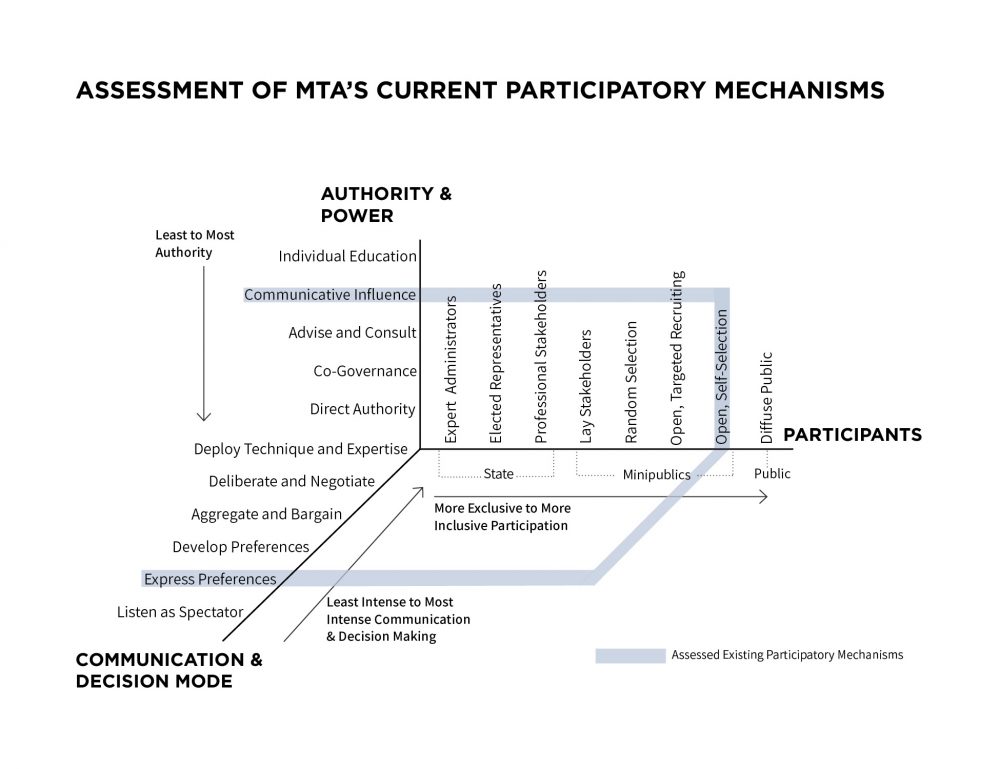
Figure 1. Situating MTA’s current participatory mechanism within Fung’s Democracy Cube. Image by Callan Hajosy, 2020. Courtesy of the authors.
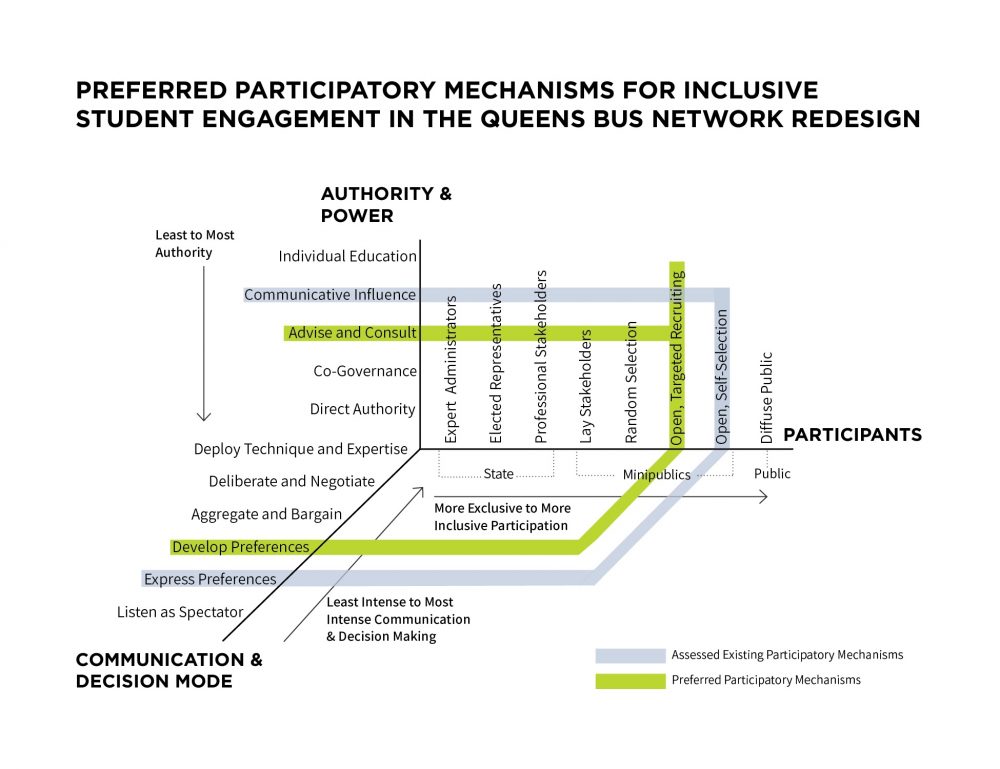
Figure 2. Preferred participatory mechanism for student engagement. Image by Callan Hajosy, 2020. Courtesy of the authors.
Primary Research
We conducted an inquiry-led approach to understand the MTA’s process and ensure the most appropriate ways to suggest interventions, which included one-on-one interviews with key informants and stakeholder groups to understand the context of the project from different lenses. Observational research was done by riding the same bus that Rockaway public school students take to school and by attending various MTA public engagement events. Lastly, we observed student-led events throughout the NYC-metro area to get a better understanding of young adults’ capacity to engage in civic planning issues. Primary field research was conducted between November 2019 and March 2020, after which COVID-19 restricted subsequent research to using platforms such as Zoom. (Fig. 3)
The scope of the interviews included formal and informal exchanges with local Rockaway stakeholders including District 23 New York State Assemblywoman Stacey Pheffer Amato; her Deputy Chief of Staff, Daniel Randell; the District 23 Constituent Liaison/Education Specialist; a New York City urban planner; a longtime Queens resident; and a high school teacher in Rockaway, Queens. These interviews provided unique insights into different aspects of the Bus Network Redesign. Participants praised certain aspects of the process while also sharing their first-hand perspective on ways to improve it. The topics we surveyed included the engagement process, rider satisfaction, information sharing, data metrics, and community engagement tactics.
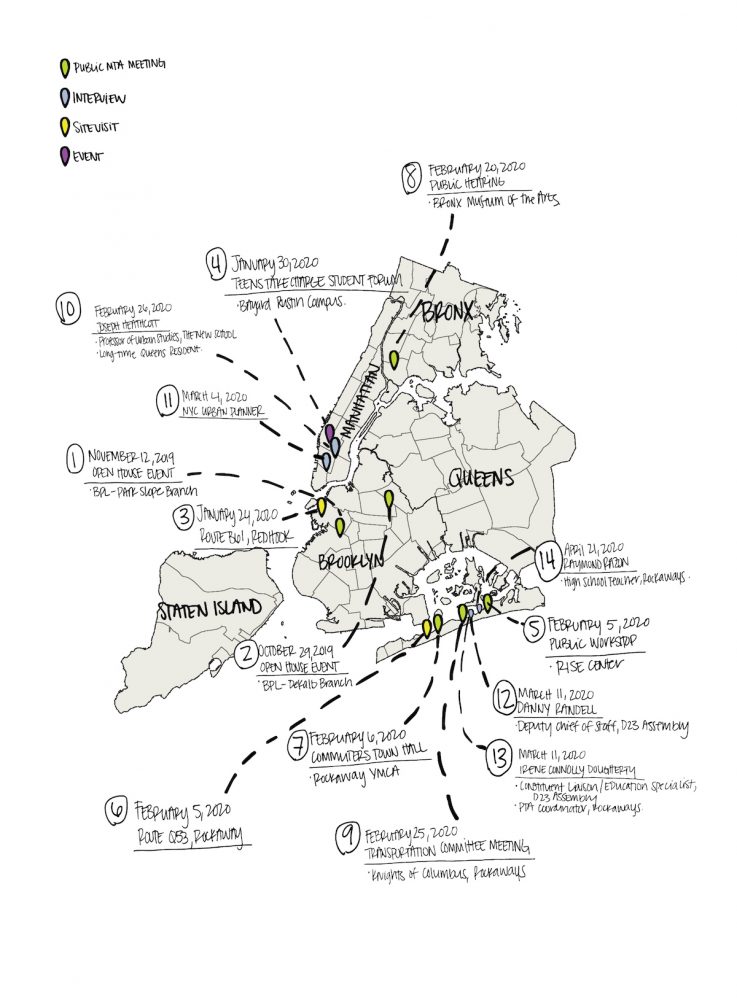
Figure 3. Map of primary research activities across New York City. Illustration by Callan Hajosy, New York, 2020. Courtesy of the authors.
In addition to personal interviews, we audited six public MTA meetings held in the Bronx, Brooklyn, and Queens, encompassing three different engagement styles: workshops, presentations, and public forums/hearings. Our attendance contributed to our understanding of how the MTA engages with the public, who participates in these meetings, and the varying ways in which they can or cannot actively contribute their perspective and knowledge to the redesign plans. Each of the public meetings we attended were held in the evenings. To engage attendees, MTA authorities would present their proposal and request feedback through notecards, post-it notes, or by allowing residents to voice their concerns out loud.
We also conducted several site visits during peak school hours (the start and end of the school day) along the bus routes in the transit-poor areas of Red Hook, Brooklyn, in addition to Rockaway, Queens, for comparison. The goal was to observe the interactions of student riders along these routes and identify any pain points. During one of these visits, we spoke in depth with an MTA bus driver who took time at the end of her route to share her observations of the student riders with us. These visits helped us design our final proposal and cater effective participatory engagement activities for students to express their potential issues with the current bus network.
Lastly, we attended a public student forum on advancing education in NYC schools, organized by the Department of Education, the Student Voice Team (within the Division of Community Affairs), and the student-led educational equity movement Teens Take Charge. This event allowed us to observe mobilized student groups engaged in conversation with Department of Education officials regarding the NYC school integration efforts.
Insights: New Proposals for Participation Using the Democracy Cube
Through our research process, we gained insight into the importance of designing and facilitating purposeful community engagement that is inclusive and meaningful due to its genuinely participatory disposition. To interpret our project insights, we printed each individual statement, then assigned categories to include all insights as they corresponded with Fung’s Democracy Cube. Once categorized, insights were overlaid and aligned with the axes of the Democracy Cube and we identified where the MTA’s current participatory mechanisms could be defined within the rubric of the Cube. In the Participants section, we found the MTA to have open, “self-selection” participation.11 This can lead to underrepresentation as “Individuals who are wealthier and better educated tend to participate more than those who lack these advantages, as do those who have special interests or stronger views.”12 We witnessed this repeatedly at the MTA’s public meetings. Although public in nature, attendees tend to participate in multiple sessions due to their knowledge of a given issue or strong personal preferences. We observed the repeat attendees of these meetings to be adults (18 years and older) and not fully representative of the Rockaway community of residents or the student riders which our study was focused on.
The second axis of Fung’s Democracy Cube focuses on the mode of communication and decision. For this, we identified the participants’ abilities to “express preferences.”13 In this arena, bus riders took the opportunity to show their inclinations to an audience of officials by queueing up at a microphone or submitting comment cards. However, there was no sustained dialogue or collaborative decisions made during the sessions. While the workshop settings were more conducive to understanding rider’s preferences, the number of facilitated workshops was comparatively lower to the open forums. Lastly, within the axis of authority and power, we understood the participants to have “communicative influence” through their testimonies, which impacts officials who witness the participants’ statements.14 From our findings, the public’s views are considered and deliberated upon internally, beyond the scope of the meetings, leading the public to question their tangible impact on planning outcomes.
After establishing the MTA’s current participatory mechanisms, our goal was to identify where proper participatory mechanisms of the Bus Network Redesign should fall within Fung’s Democracy Cube to generate a more just and inclusive process of engagement. The preferred mechanisms, in Fung’s terms, are open, targeted recruiting; aggregate and bargain; and advise and consult (corresponding to the three axes). Along the participants axis, we propose the MTA achieve an increase in participants’ selectivity through open, targeted recruiting that seeks to involve students (and, ultimately, all rider groups) in the participatory planning process. Through this mechanism, the MTA can increase engagement from the participation of the current, grossly underrepresented student groups. For the communication and decision mode axis, we recommend the MTA increase collective decision-making by facilitating an environment where participants (i.e., students) can aggregate and advocate for their needs. In this mode, participants are aware of their needs and desires, and those preferences are aggregated to influence outcomes. This part of the process is intended to be exploratory, allowing priorities to be identified and outcomes to be determined through finding the best alternative to the collective preference expressed by the participants. In the axis of authority and power, we suggest the MTA grant greater control and empower participants to realize outcomes for policy and action by allowing the public to advise and consult with MTA officials. In this mode, public authorities maintain decision-making power, but they commit themselves to receive and integrate input from participants.15
Together, we believe these three preferred participatory mechanisms will promote critical dialogue to encourage co-designed solutions and favorably influence outcomes. They will increase the representation of young riders within the Bus Network Redesign process and empower students to be active contributors who can influence community decision-making. Most importantly, they will engender trust between the public and the MTA.
Categorizing and synthesizing the project insights allowed us to identify preferred participatory mechanisms we would recommend for the MTA in the Queens Bus Network Redesign process specifically. (Fig. 4) These preferred mechanisms guided our design proposal “Re-Route!”, a workshop facilitation guide that seeks to productively engage middle and high school students to gather qualitative insights related to their transportation needs while fostering an environment of inclusion and participation.
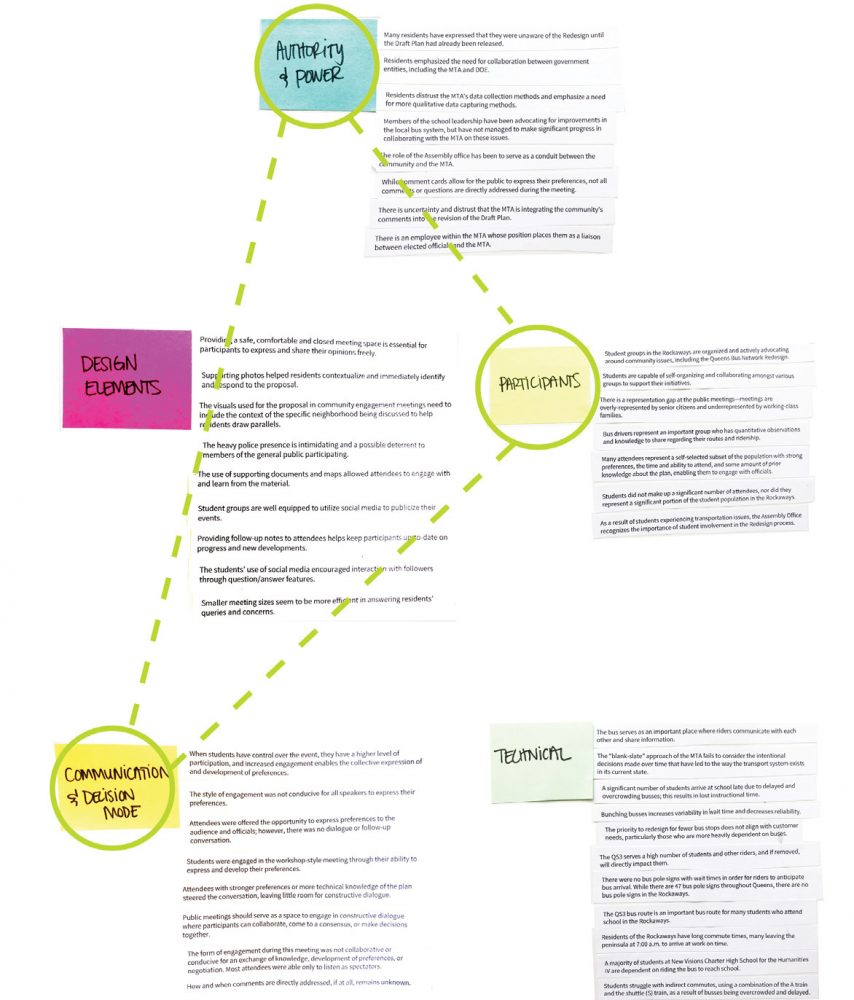
Figure 4. Situating MTA’s current participatory mechanism in Fung’s democracy cube. Image by Callan Hajosy, 2020. Courtesy of the authors.
Re-Route!
We designed “Re-Route” for Community-Based Organizations (CBOs) and community partners to help execute project-based co-design workshops for middle and high school students. It includes implementation strategies and outlines further suggestions to guide the MTA toward effectively improving the Queen’s bus service for its student ridership. Beyond its focus on mobility services (public transportation), our proposal seeks to generate an iterative, responsive, and replicable method with which to engage middle and high schoolers to approach collaborative community decision-making.
The guide, designed as a tabloid-size trifold, can be accessed for free from our website (https://reroute-site.glitch.me/) where it can be downloaded, printed, and distributed to workshop facilitators. (Fig. 5) Through our research, we have understood that there tends to be a gap between the needs and aspirations of the often deemed “less qualified” general public and authoritative bodies such as the MTA. Strategies for implementing community-led approaches can (and should) vary depending on the problems being approached. We recommend a mixed-participatory structure of stakeholder engagement and interaction between public agencies and local community groups to aid the community-led changes the Bus Network Redesign process aspired to achieve.
We have identified key actors to catalyze the interaction between the MTA and the general public. These include the MTA’s Assistant Director of Community Relations, whose responsibility is to connect the MTA to elected officials (in this case, the District 23 Assembly Office), and the elected officials themselves, who connect the general public to the MTA’s Assistant Director of Community Relations. However, we recognize the need for an additional conduit to serve as a more direct link between elected officials and students. The proposed implementation strategy encourages expanded partnerships between local community-based organizations and youth to serve as such conduits.

Figure 5. The final “Re-Route!” guide to enable student engagement in civic workshops. Designed by Maanasa Sivashankar and Callan Hajosy, 2020. Courtesy of the authors.
CBOs are instrumental in shaping policy and advocating for social change within their neighborhoods and districts. We believe that engaging with local organizations will help advance the goal of mobility equity for low-income residents. CBOs and youth organizations have direct and sustained relationships with students who participate in their programs and benefit from such initiatives. Therefore, they are uniquely prepared to facilitate the workshops proposed in our work. In Rockaway, Queens, we identified the following potential partner organizations: Rockaway Initiative for Sustainability (RISE), Rockaway Youth Task Force, and the Queens Library for Teens. These organizations empower youth through leadership development and civic-learning curriculums.
The engagement process can be activated through conduit-led partnerships that allow the participatory mechanisms identified within the framework of the Democracy Cube to come into fruition (targeted recruiting, aggregate and bargain, and advise and consult).
The MTA has been forthcoming that they do not have a date for the release of the Queens Bus Network Redesign Final Plan and the eventual implementation of the proposed changes, notably in consequence to the COVID-19 pandemic. This offers an opportunity to incorporate additional feedback and develop further iterations of the proposed plans, which the MTA is striving to do with the facilitation of public workshops and Draft Plan outreach.16
Between the release of the “Draft Plan” and the release of the proposed “Final Plan,” the MTA scheduled a number of public meetings to gather public feedback. There were 39 meetings proposed throughout Queens between January 21, 2020, and the Final Plan was anticipated for release in April of that same year. Unfortunately, the impact of the COVID-19 pandemic resulted in the MTA postponing all meetings indefinitely after March 10, 2020.17
The COVID-19 pandemic stalled our research process, inhibited our ability to host in-person workshops with Rockaway students, and halted all planned outreach and public workshops sessions by the MTA. Despite the obstacles, the social safety measures created a unique and opportune setting for our proposal. The following outlines the five-step process of our implementation strategy. (Fig. 6)

Figure 6. Proposed stage of intervention and how it fits into MTA’s current project process. Design by Callan Hajosy and Maanasa Sivashankar, 2020. Courtesy of the authors.
1. Identify and formalize partnerships with local CBOs and youth organizations. We suggest this be done through a Request for Proposal (RFP) process so that interested CBOs and youth groups can choose to participate within their capacity and interest. Partnerships will allow approved CBOs and youth groups to be compensated for their time. These arrangements contribute resources to carry out workshops alleviating the strain of financially strained organizations.
2. Gather qualitative data through surveys. Our research and analysis indicated a lack of qualitative data collection methods employed by the MTA. We propose the use of surveys created for students and parents who depend on the bus. This helps us understand their travel patterns, pain points, and dependencies, helping us determine to what extent these students and parents feel incorporated in the MTA’s current outreach and engagement strategy. These examinations will help establish goals and inform the development of workshop strategies. We recommend that surveys be made available online in coordination with the Department of Education and Parent Teacher Association (PTA) bodies. They can be advertised on buses and in bus shelters throughout the borough using a QR code to offer digital access in real-time.
3. Conduct student workshops.“Re-Route!” offers facilitation guidelines for CBOs and youth organizations to conduct student workshops. The guide offers valuable tips, helps establish workshop goals, details activities intended to engage students, and suggests ways to gather feedback and insights for improving the bus network.
4. Collate insights. The facilitation guide concludes with guidelines on how to collect valuable student insights. Partnerships with elected officials and the Assistant director of Community Relations will allow the resulting insights to be shared with the MTA for inclusion in the proposed “Final Plan.”
5. Assess and evaluate the engagement process. Post-workshop assessment is essential for understanding the students’ impressions of the engagement process allowing further design iteration for future implementation. The findings from the evaluation stage will create opportunities for better informed engagement strategies.
Conclusion
Our approach to co-design uses a design-led research process, participatory design principles, and practical tools to facilitate participation. We incorporate insights from in-depth ethnographic research, interviews, workshops, and an iterative ideation process to address the needs of all users. This type of approach can “help redeem the promise of infrastructure by making more visible, and indeed more political, the formative role of infrastructures in the ways we think, build and inhabit our shared futures.”18 Co-designing solutions allows us to convene collective creativity and ensure true civic innovation that works for all citizens. Ultimately, co-design has the power to create involvement and ownership, generate a shared understanding between the different stakeholders, and support an environment of immersion and dialogue to positively address challenges.
We began our work with the goal of designing an inclusive process and implementation strategy that would enable equity-centered and collaborative community development. Through our extensive primary research process, we were able to synthesize our observations and form insights that guided our final design proposal. In summary, our work examines the MTA’s Bus Network Redesign project’s engagement process, identifies gaps in this process, and proposes steps for more equitable and inclusive decision-making through our publication “Re-Route!”, which focuses on a single, yet critical user group—our youth.
While civic planning has traditionally left little room for directly incorporating youth concerns, our work provides guidelines for creating an ecology of inclusion, increasing student participation, and fostering collective decision-making. It is our ambition that this work opens paths for more informed public engagement practices in the future, ultimately leading to a more equitable bus network serving the borough of Queens.19
Acknowledgements
We would like to thank our thesis advisors, Profesor Miodrag Mitrašinović and Ana Fisyak, for their unwavering support and guidance throughout our thesis process. Thank you to William Morrish, Evren Uzer, Gabriela Rendón, and Allison Mears for taking an interest in our work and guiding us with critical feedback and perspective. Thank you to David López García for sharing valuable resources to incorporate into our work. We would also like to thank all of the experts and Rockaway residents who were involved in the primary research phase of this project. We are especially grateful to those who continued to support our work during the many unexpected and profound changes we all experienced due to the COVID-19 pandemic.
Endnotes
1. Emma Blomkamp, “The Promise of Co-Design for Public Policy,” Australian Journal of Public Administration 77, no. 4 (2018): 729-743.↵
2. Nicole De Koning, Menno Manschot and Marc Steen, “Benefits of Co-design in Service Design Projects,” International Journal of Design 5, no.2 (2011): 53-60.↵
3. New York City Transit and MTA Bus Company, “Queen Bus Network Existing Conditions Report,” August 2019, https://new.mta.info/sites/default/files/2019-08/367_19_Queens%20Bus%20Network%20Redesign_LATEST.pdf, 43.↵
4. For our research, we look primarily at middle and high school students and refer to them as ‘youth.’ We use the term youth interchangeably with the term students.↵
5. New York City Transit Bus (@NYCTBus), Twitter, via Direct Message, February 26, 2020, 10:51am: “Hello. The figures provided were calculated using October 2019 ridership data. Express buses do not accept student passes. Ridership data does not include fare evaders. If express bus ridership taken into account, system-wide figure would be 10.63%. For an average Saturday, only 0.29% of riders are student, and for a Sunday, only 0.16%. For local/SBS Buses QU – 16.61% BX – 9.50% BK – 11.93% MA – 5.96% SI – 10.77% System-wide – 10.88% We hope this information helps. ^KF.”↵
6. New York City Transit and MTA Bus Company, “Queen Bus Network Existing Conditions Report,” 59, 74.↵
7. New York City Transit and MTA Bus Company, “Queens Bus Network Redesign Draft Plan,” January 2020, https://new.mta.info/document/12706.↵
8. Archon Fung, “Varieties of Participation in Complex Governance,” Public Administration Review 66 (2006): 66.↵
9. Fung, “Varieties of Participation in Complex Governance,” 66.↵
10. Ibid.↵
11. Ibid, 67.↵
12. Ibid.↵
13. Ibid, 68.↵
14. Ibid, 69.↵
15. Ibid.↵
16. Metropolitan Transit Authority, “Queens Bus Network Redesign,” https://new.mta.info/queensbusredesign.↵
17. Ibid.↵
18. Hannah Appel, Nikhil Anand, and Akhil Gupta, The Promise of Infrastructure (Durham: Duke University Press, 2018), 30.↵
19. Our complete thesis work can be found at: https://issuu.com/maanasa/docs/re-route_upload.↵
Author Affiliations
Callan Hajosy and Maanasa Sivashankar are designers and co-founders of the Peoples Design Co., a service design collaborative that believes in design’s ability to create inclusive, equitable, and joyful cities by catalyzing greater collaboration between governments, organizations and the people they serve. Their practice involves applying in-depth participatory research and design methods to help improve service implementation and access for marginalized, low-income communities. They graduated from the School of Design Strategies at Parsons School of Design, The New School in 2020. Callan has eight years of program design and management experience in the international non-profit sector, working most recently in partnership between communities and government schools in Cape Town, South Africa. Maanasa has six years of qualitative research and social development project experience, collaborating with local governments and organizations in India, North America and the Caribbean Islands.
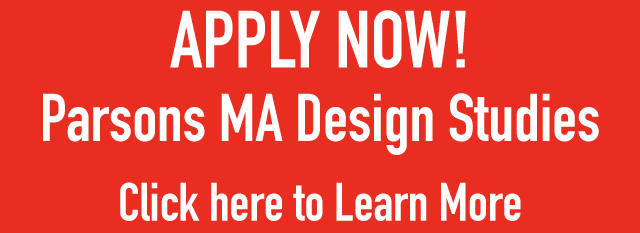
 DESIGN STUDIES BLOG
DESIGN STUDIES BLOG
